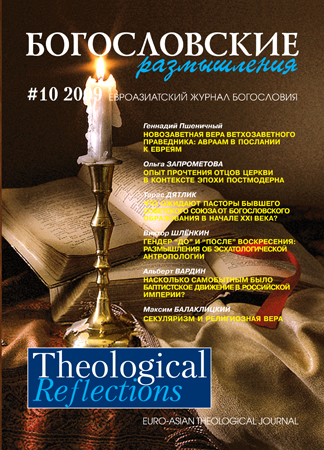The New Testament Faith of the Old Testament Righteous One: Abraham in the Letter to the Hebrews
Keywords:
Old Testament Righteous, Abraham, Letter to the HebrewsAbstract
This work examines particular characteristics of faith, on which the author of Hebrews focuses the reader's attention. Unlike other New Testament books, where faith is presented as a means for obtaining salvation in Christ, or as a necessary component for performing a miracle, the book of Hebrews depicts faith as patience and endurance, as daily "walking with God," as sojourning and constant waiting for the One who "will come and will not delay." The author of the book chooses Old Testament heroes to be examples of such faith, particularly Abraham. Analyzing the structure of the Abrahamic narrative the author of the letter presents to his readers Abraham as a hero of faith who started by faith his spiritual journey, sojourned by faith his entire life, and concluded his earthly traveling also by faith. This work shows that the faith described in Hebrews originates in the Scripture of Torah. The author of Hebrews didn't "endow" his Old Testament heroes with New Testament qualities in order to strengthen his own point, but "discovered" these qualities diligently exegeting the Old Testament texts and disclosing the intention of the Old Testament authors.Downloads
How to Cite
Issue
Section
License
Copyright (c) 2020 Gennady PSHENICHNY

This work is licensed under a Creative Commons Attribution-NonCommercial 4.0 International License.
All articles published in the Journal are distributed under a Creative Commons Attribution-NonCommercial 4.0 International License
By submitting an article for publication in Theological Reflections: Eastern European Journal of Theology the author grants the editors the right to publish the article and distribute it in electronic and print form.
The author reserves all copyrights and the right to use the materials of the article in whole or in part for educational purposes, to write his own dissertations, to prepare abstracts, conference reports, oral presentations, etc., as well as post electronic copies of articles (including the final electronic version downloaded from the journal’s official website) on non-commercial web-resources without the consent of the editorial board and founders.



